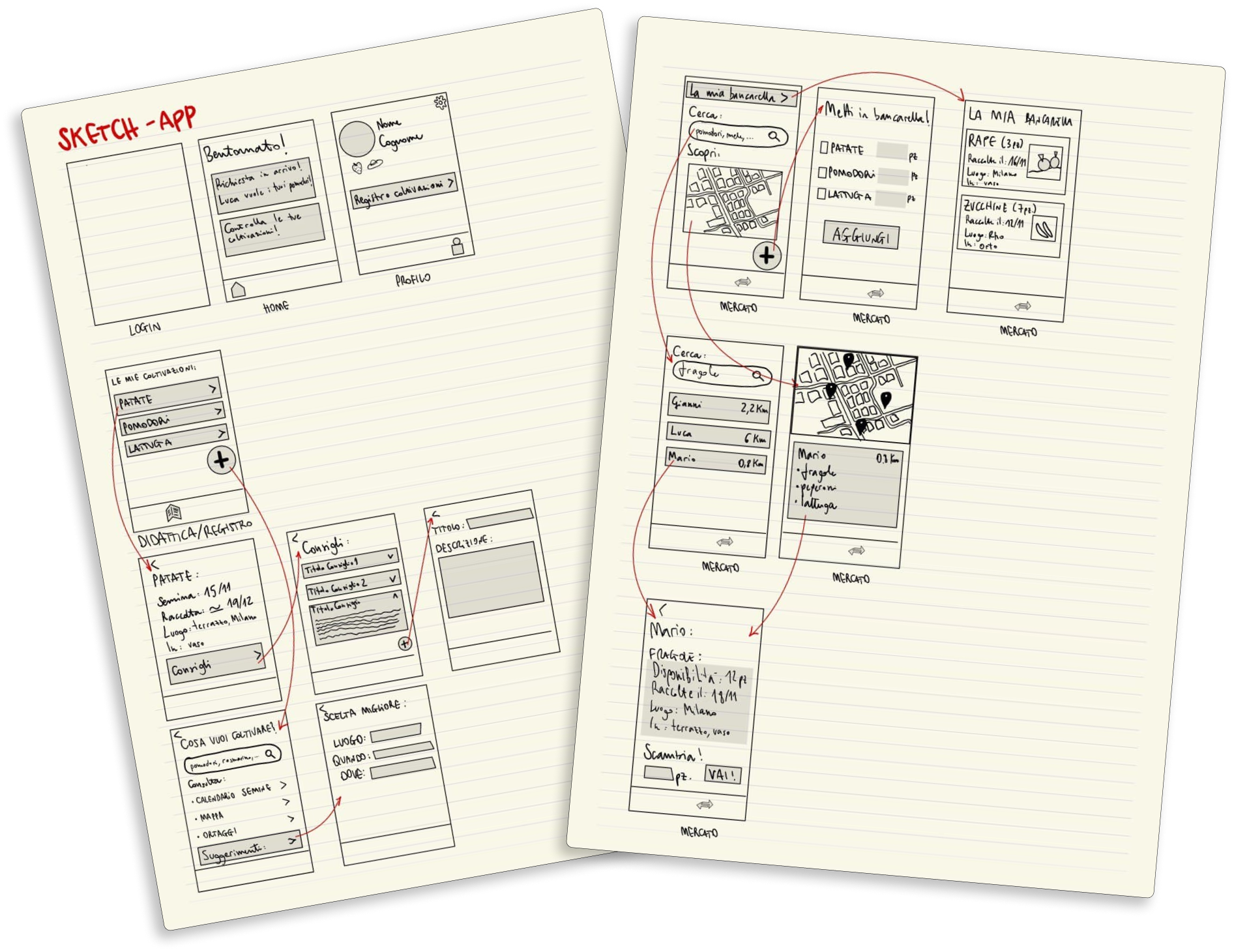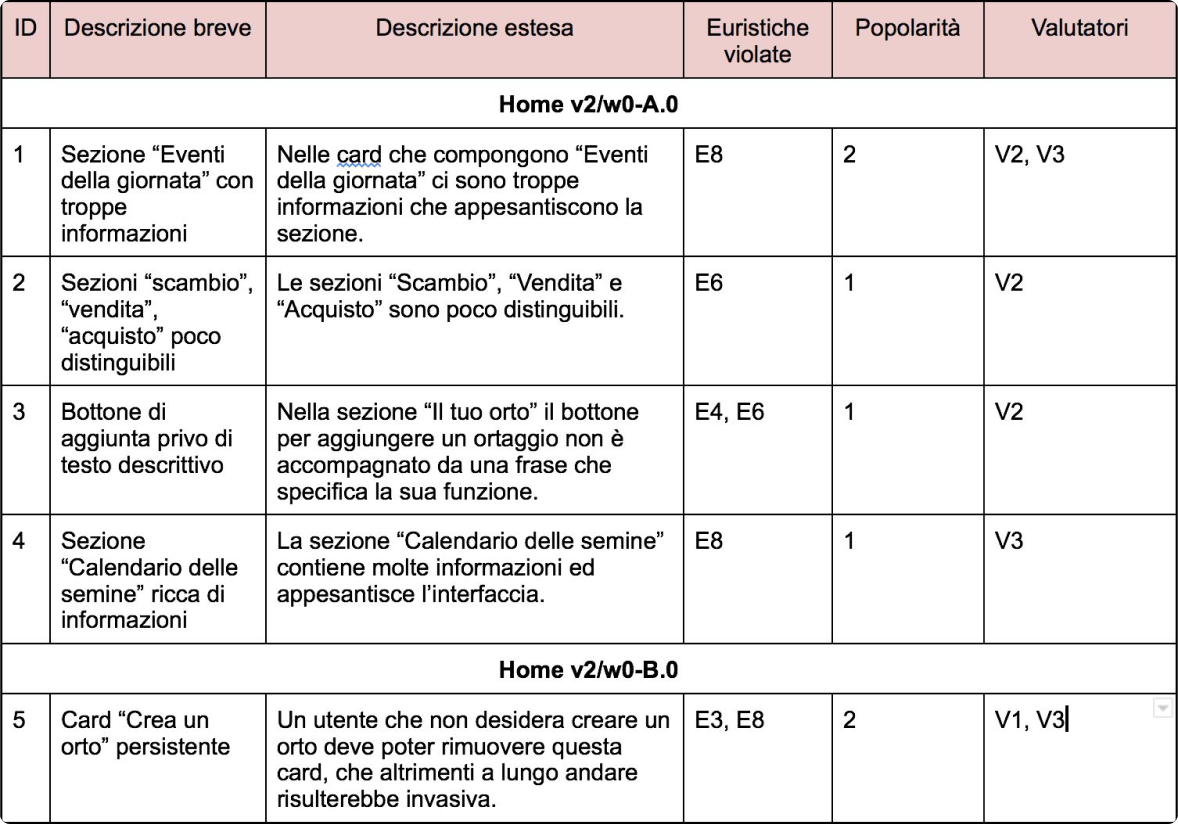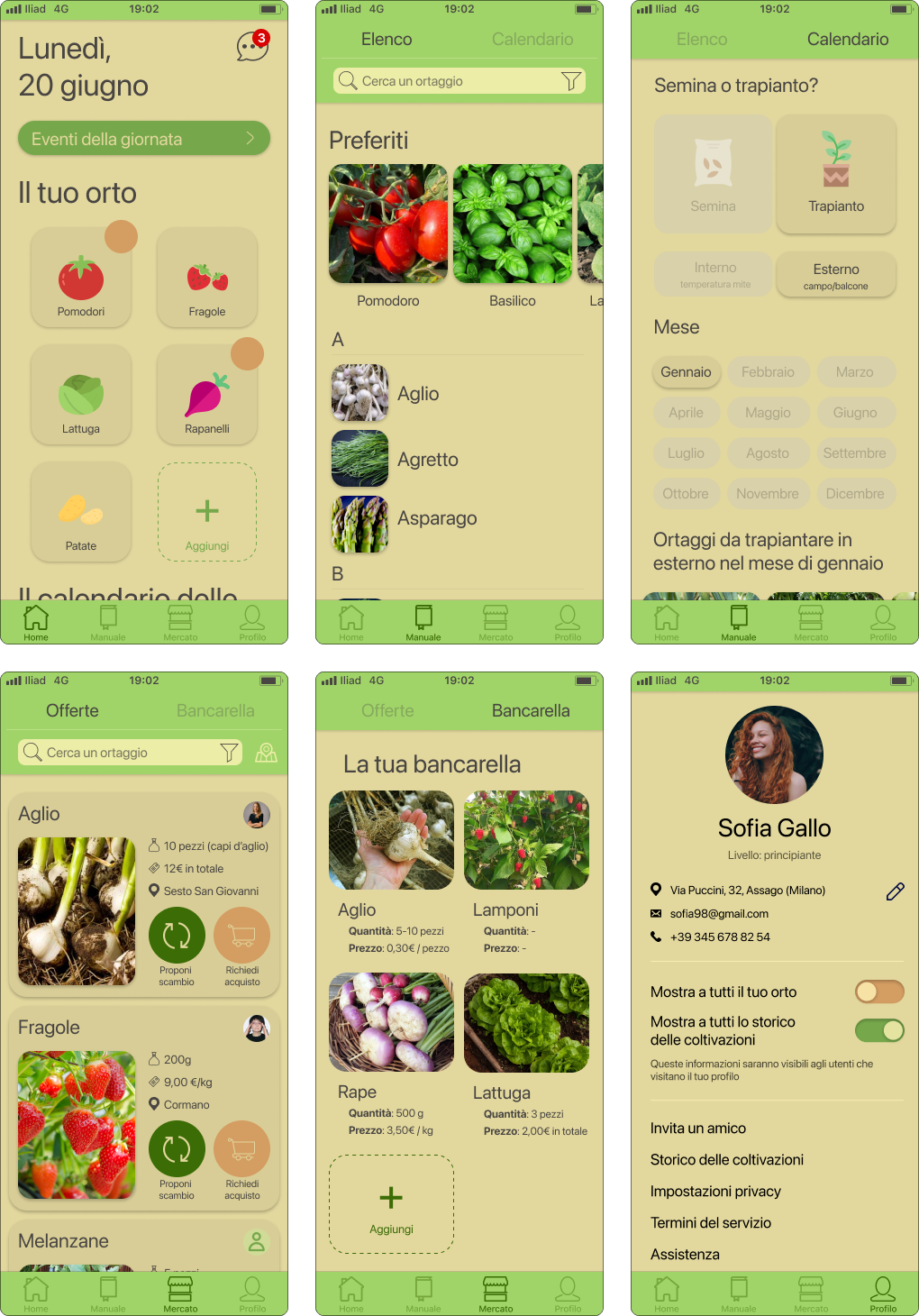Project features
Overview
Gemmo is an application designed with the aim of bringing people closer to the world of agriculture by providing instructions for growing vegetables even on a small scale. An internal market within the application also allows for exchanges or purchases with neighbors. The application is not limited to assisting urban gardeners, but extends to anyone who wants to grow vegetables, from beginners to experts, in both rural and urban areas.
The name of the application, Gemmo, comes from Latin and means to sprout, put forth buds, shine, and sparkle like a gem.
The entire process, from ideation to implementation of the prototype, was carried out by a team of three university students for the "Design Laboratory" course. During the development phases, each activity was tackled by all members of the project team.
Ideation
The brief for this university project was very simple and free of constraints. The task was to conceive and design a new product (application, website, portal, etc.) with a
central theme related to decarbonization, green economy, smart cities, circular economy, or
recycling.
Context
The idea behind the application came to light after a long brainstorming session focused on green themes.
The scope of interest is related to various events and realities that permeate our society. These include
the ever-increasing percentage of people living in cities, the importance of green spaces and parks in
cities, associated with longer life expectancy. Last but not least, gardening is a hands-on activity that
helps people reconnect with the earth, reestablish an intimate connection with nature, and restore
individual well-being.
The application
Gemmo targets anyone who wants to create a vegetable garden, without
distinction for age, gender, or place of residence (urban or rural context).
The primary objectives are three: suggest which vegetables to cultivate
based on experience, location, and season; provide a guide for cultivation for beginners and experts; enable
the exchange and sale of vegetables. Therefore, the main functionalities
are three: one related to the user's vegetable garden, one related to the vegetable manual, and one related
to the marketplace.
Iterative design process
The design process of Gemmo, undertaken during this project, involves three iterative cycles
that include different techniques for data collection, design, prototyping, and evaluation.
First cycle

First design cycle
The first cycle begins with a data collection activity: the questionnaire.
Through this technique, potential users were involved to understand their attitudes towards horticulture and
what obstacles they faced in cultivating a small-scale garden. The questionnaire objectives were mainly
related to understanding personal habits related to this area of interest, as well as the search for useful
information and evaluations related to the main idea proposed by Gemmo.
Secondly, based on the information gathered through the questionnaire, it was possible to independently and
individually carry out a brainstorming session related to the application
and everything that could revolve around this area of interest. Subsequently, the combination of the three
brainstorming sessions allowed for the discussion and synthesis of ideas into a single document that
encompassed all the considerations.
In the third phase of the first cycle, we started to produce sketches and preliminary wireframes
based on the considerations that emerged during the brainstorming.

Gemmo's early sketches
Finally, in the fourth and last phase of the first cycle, we carried out a qualitative evaluation
by
presenting the wireframes produced to 3 users and asking them to comment on them using the think aloud protocol technique. Thanks to these evaluations, it was possible
to highlight potential problems, issues, and doubts for each screen presented.
In conclusion, the first cycle allowed us to obtain useful qualitative indications to guide the development
of the application prototype. The qualitative evaluation at the end highlighted considerations of various
kinds on which the second development cycle builds upon.
Second cycle

Second design cycle
The second cycle consists of three phases. Initially, the analysis of the verbal evaluation
carried out at the end of the first cycle allowed us to draw up a summary of issues that collected the
potential problems to be solved. For each relevant problem, a relative solution was proposed.
Following the analysis and synthesis of the verbal evaluation, based on the proposed solutions for the
emerged issues, it was possible to evolve and redesign the wireframes. The
verbal evaluations and subsequent analysis provided many insights for the improvement of the wireframes. In
particular, this phase allowed us to understand how to set up two fundamental screens, which until now had
two different types and ideologies of design.
Based on the updated wireframes, it was chosen to perform a heuristic evaluation of the application, using Nielsen's 10 heuristics as a
reference point to identify usability problems. The wireframes were evaluated by us, as usability experts
who know the details of the heuristics used. Each evaluator carried out anindividual evaluation,
marking in a table those that they believed represented violations of the heuristics, for each wireframe.
Following the same approach already adopted for the verbal evaluation in the first cycle, the different
contributions were then synthesized in a single table, establishing by majority which problems to consider
as such.

Extract from the heuristic evaluation summary
In conclusion, several usability issues emerged during this cycle. The next cycle begins with the list of
violations and moves towards a more evolved version of the application.
Third cycle

Third design cycle
The third cycle, also consisting of three phases, begins with the analysis of the heuristic evaluation
performed at the end of the second cycle. Starting from the synthesis of the latter, a value related to the
severity of the problem was assigned to each problem, using a five-value
scale (from 0 to 4) and considering three factors: frequency of occurrence, impact of the problem, and
persistence. For each problem, a solution was proposed.
The solutions proposed for the problems identified by the heuristic evaluation allowed the wireframes to be updated. In the second phase, these wireframes were
converted into mockups with the addition of colors and images. Finally, the
mockups were used to create an interactive prototype.

Some of the mockups used to implement the prototype
Having a realistic prototype available, the third phase of this cycle was the execution of user tests
with the intention of evaluating the main functionalities of the application. The main purpose of the tests
was to verify the effectiveness in carrying out tasks, i.e., evaluating
successes and failures in terms of correctness, accuracy, and completeness in achieving predetermined goals.
Efficiency evaluation was considered secondary since the prototype was still in a preliminary stage. The
administration of tasks to users was uniform; only the order of task execution was randomly chosen to
minimize the order bias effect. The effectiveness verification allowed for a pragmatic evaluation
of the work done up to this point. From the results obtained, it was possible to affirm that the usability,
conceptual setting, and architecture of the application seem to be functional to the objectives.
In conclusion, the third cycle brings positive perspectives. The structure of the fourth cycle
could be based on solving the problems identified during the user tests related to the prototype, to
continue with its enrichment, and conclude with new user tests.
Research and analysis
The last step taken in anticipation of the future design process was the critical analysis of the strengths, weaknesses, opportunities, and threats (SWOT analysis) of the application. Additionally, an evaluation ofcompetitors and services that could inspire the actual implementation of the objectives listed above was also carried out.
Building a complete picture of the intrinsic and extrinsic properties of the application, as well as describing the context in which the application would be placed, allows for a broad overview. In this way, subsequent phases related to the design can be born and grow based on fixed points and stable foundations.
Considerations
Since Gemmo is a newly conceived application, there are various reflections
and evaluations to be made on
multiple facets related to this idea. Two of these have been addressed in an approximate way to try to give
a general idea of the possible issues that could arise during the actual implementation and definition of
the application.
Environmental impact
Since one of the key values that drives the entire project is the reduction of environmental impact,
in favor of more sustainable self-production, it is necessary to consider the existence of possible side effects that must be carefully investigated and resolved. Some
of these are the use of energy to power computer systems, the increase in polluting emissions for the
transport and movement of traded/sold/purchased goods, and the use of non-sustainable material for
cultivation.
In view of future developments, these and other points that may emerge should be addressed as a priority, seeking effective solutions for reducing consumption for each of them.
Economic aspects
In order to support the costs of the service and ensure revenue, different
perspectives can be considered, such as retaining a percentage of sales transactions, inserting advertising
in the application, paying a one-time fee for the use of the application, involving partners for the sale of
products and/or services useful to the user, or offering in-app purchases and additional paid services in a
freemium approach.
Conclusions and future developments
In conclusion, the greatest hope is that the application will actually be implemented. In the short term, further design and development cycles are planned, involving a much larger number of stakeholders. This includes creating a database of information related to vegetables and conducting realistic tests in which users use an advanced prototype of the system, in combination with pots, soil, and seeds/plants, in a real context and for a medium to long period of time.
Personal case studies
Personal projects
Copyright © 2022 Matteo Cusini. All Rights Reserved.